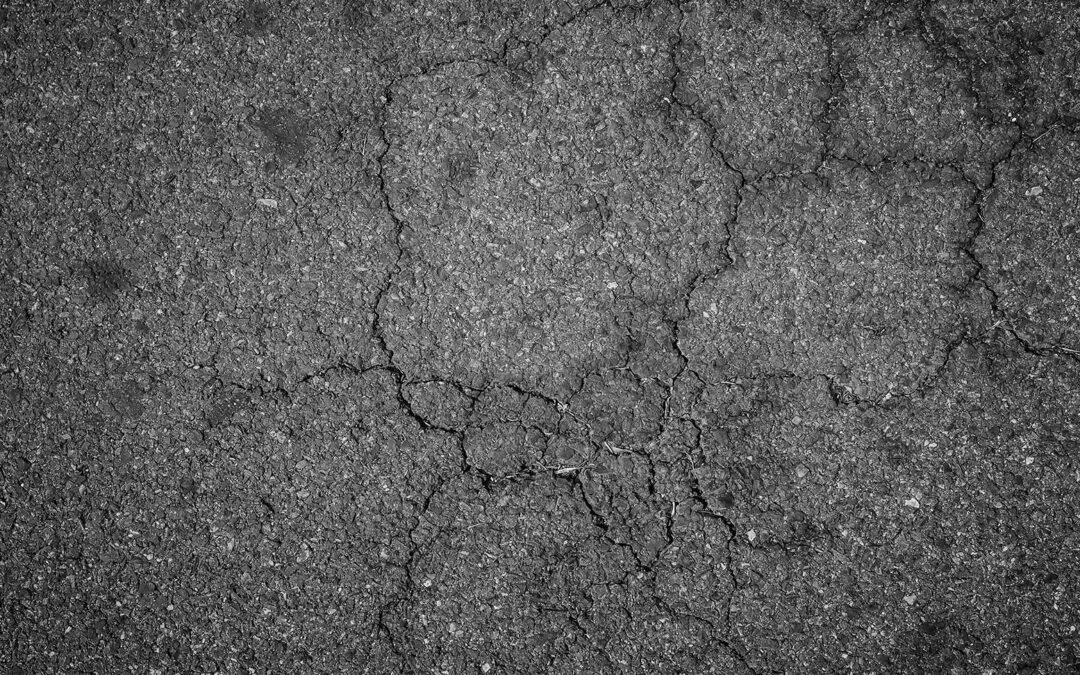 Joint Reflection Cracking Cracks in a flexible overlay of a rigid pavement. The cracks occur directly over the underlying rigid pavement joints. Joint reflection cracking does not include reflection cracks that occur away from an underlying joint or from any other...
Joint Reflection Cracking Cracks in a flexible overlay of a rigid pavement. The cracks occur directly over the underlying rigid pavement joints. Joint reflection cracking does not include reflection cracks that occur away from an underlying joint or from any other...
 Depression Localized pavement surface areas with slightly lower elevations than the surrounding pavement. Depressions are very noticeable after a rain when they fill with water. Depression in an access roadway probably caused by subgrade settlement. Note that the...
Depression Localized pavement surface areas with slightly lower elevations than the surrounding pavement. Depressions are very noticeable after a rain when they fill with water. Depression in an access roadway probably caused by subgrade settlement. Note that the...
 Corrugation and Shoving A form of plastic movement typified by ripples (corrugation) or an abrupt wave (shoving) across the pavement surface. The distortion is perpendicular to the traffic direction. Usually occurs at points where traffic starts and stops...
Corrugation and Shoving A form of plastic movement typified by ripples (corrugation) or an abrupt wave (shoving) across the pavement surface. The distortion is perpendicular to the traffic direction. Usually occurs at points where traffic starts and stops...
 Block Cracking Interconnected cracks that divide the pavement up into rectangular pieces. Blocks range in size from approximately 1 ft2 to 100 ft2. Larger blocks are generally classified as longitudinal and transverse cracking. Block cracking normally occurs over a...
Block Cracking Interconnected cracks that divide the pavement up into rectangular pieces. Blocks range in size from approximately 1 ft2 to 100 ft2. Larger blocks are generally classified as longitudinal and transverse cracking. Block cracking normally occurs over a...
 Bleeding A film of asphalt binder on the pavement surface. It usually creates a shiny, glass-like reflecting surface that can become sticky when dry and slippery when wet. Classic bleeding on a newly paved road shows up as a shiny reflecting surface –...
Bleeding A film of asphalt binder on the pavement surface. It usually creates a shiny, glass-like reflecting surface that can become sticky when dry and slippery when wet. Classic bleeding on a newly paved road shows up as a shiny reflecting surface –...
 Alligator (Fatigue) Cracking A series of interconnected cracks caused by fatigue failure of the HMA surface under repeated traffic loading. As the number and magnitude of loads becomes too great, longitudinal cracks begin to form (usually in the wheelpaths). After...
Alligator (Fatigue) Cracking A series of interconnected cracks caused by fatigue failure of the HMA surface under repeated traffic loading. As the number and magnitude of loads becomes too great, longitudinal cracks begin to form (usually in the wheelpaths). After...







